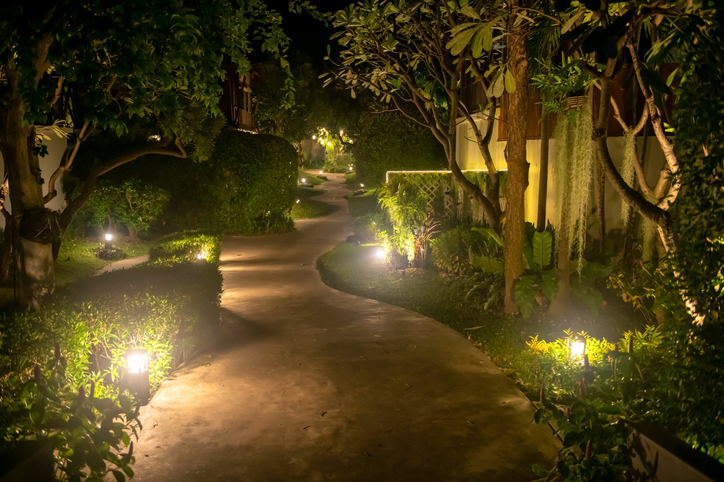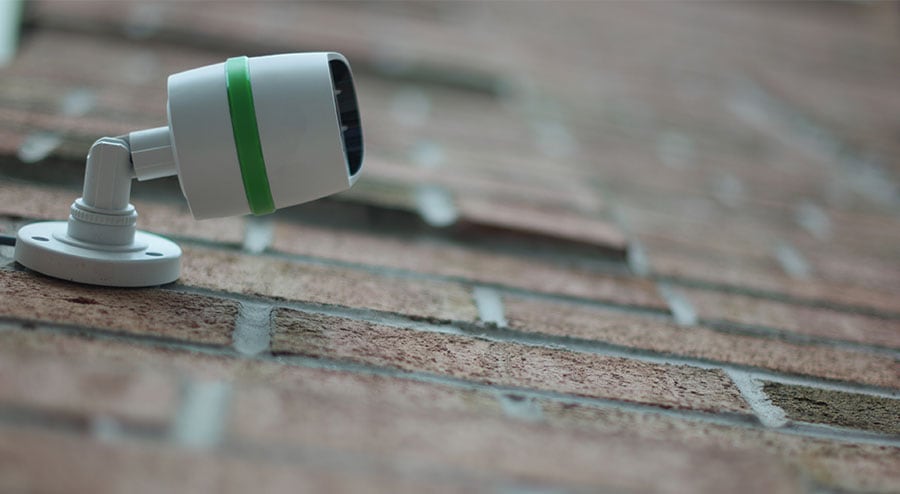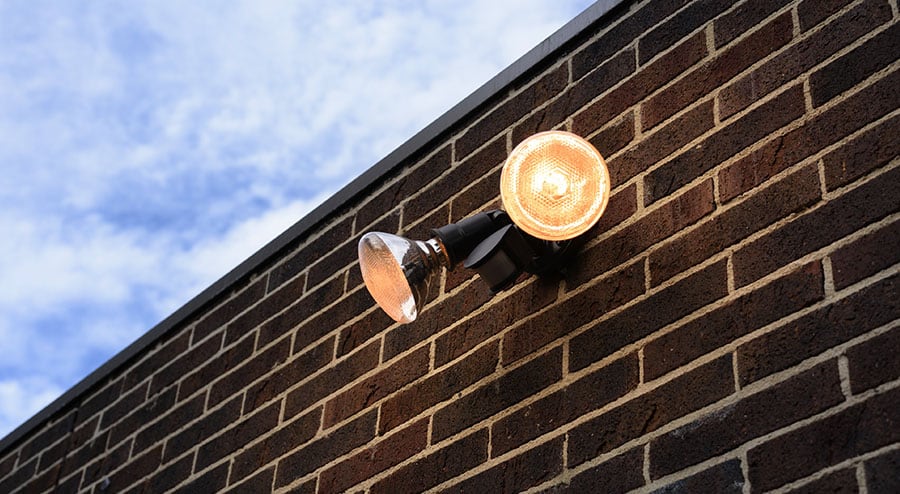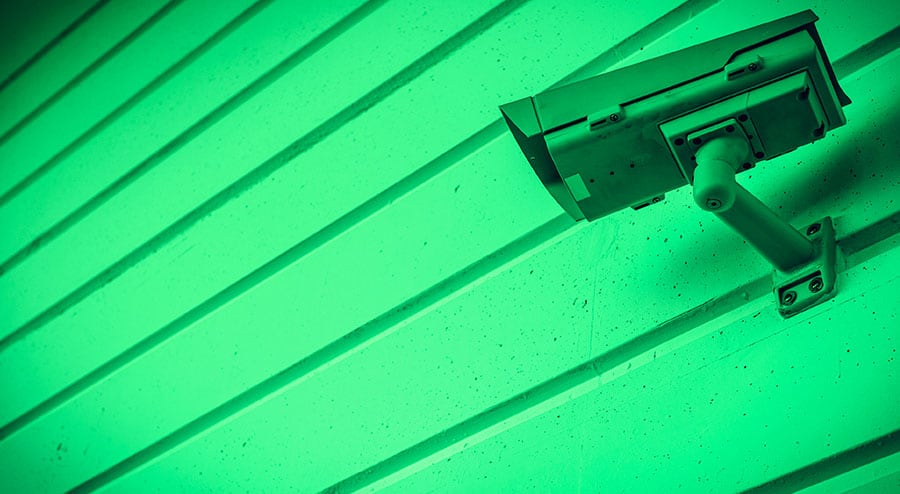Outdoor lighting is focused on for the aesthetic appeal and functional usability of our homes. Not only does it make our homes stand out and appealing, but it also increases safety and is important for navigation.
Along with functionality, outdoor lighting significantly enhances home security as a well-lit exterior deters potential intruders, minimizing the likelihood of break-ins. Additionally, it improves visibility for homeowners, allowing them to identify any unusual activity around their property. Incorporating outdoor lighting can go a long way in cultivating a safe and welcoming atmosphere in and around our homes.

- The Role of Outdoor Lighting in Home Security
- Illuminating Choices – Types and Applications of Outdoor Lighting
- Factors to consider in Outdoor Lighting Selection
- Energy Efficiency and Modern Advancements in Outdoor Lighting
- Tips and Regulatory Considerations for Outdoor Lighting
- Maintenance and Cost Analysis of Outdoor Lighting
- Take Away
The Role of Outdoor Lighting in Home Security
A well-lit exterior can significantly deter potential intruders and adds an extra layer of security to a home. Burglars are typically attracted to homes that are easy to access, and insufficient lighting can provide them with the shadows and dark spots they need to move undetected. By strategically placing outdoor lights, homeowners can minimize these dark areas, making their homes less appealing targets.
The integration of smart outdoor lighting into home security systems takes safety measures a step further. Brands like Philips Hue or Ring offer advanced lighting systems that can be controlled remotely through smartphone apps or integrated with other smart home devices. These systems can be programmed to follow routines, such as turning on at dusk or lighting up when you’re away, to give the impression that the house is occupied. They can also send alerts to homeowners when the lights are triggered, increasing the chances of spotting suspicious activities in real time.
Motion-sensor lights are a particularly effective component of a home’s security plan as they illuminate areas when movement is detected, startling potential intruders and alerting homeowners to their presence. Moreover, products like the Steinel IS 3180, known for its reliable and precise detection, can help homeowners cover wide areas without constant illumination, adding to energy efficiency.
The strategic positioning of outdoor lights can enhance security camera performance as lighting can eliminate blind spots or shadows that might otherwise hide intruders from camera view. When installing outdoor lights, ensure they’re placed above the field of view of security cameras, and angled downwards. This will prevent glare that could interfere with camera footage, ensuring a clearer view of the property at all times. For maximum effect, homeowners can consider security floodlights like the Ring Floodlight Cam, which combines powerful LED light panels with a security camera, offering comprehensive coverage of outdoor spaces.
Illuminating Choices – Types and Applications of Outdoor Lighting
Outdoor lighting comes in many styles, each serving specific purposes. Path lights, such as the Hampton Bay Solar Path Lights, cast a downward glow to illuminate walkways, enhancing visibility for safer navigation. Additionally, wall-mounted fixtures like the Kichler Barrington Outdoor Wall Light are perfect for lighting entrances, patios, or garage doors, providing both illumination and an inviting ambiance.
Spotlighting and ambient lighting alternatively are used for design purposes. Spotlights, like the Portfolio Outdoor Landscape Light, focus a concentrated beam on a specific area, ideal for highlighting the key features of a garden, such as statues or plants. Ambient lighting, often provided by hanging lights or post lights, creates a soft, diffused glow perfect for creating a welcoming atmosphere in social spaces like decks or patios.
Underwater lights are further used for pools or decorative fountains. Products such as the Pentair IntelliBrite 5g LED Underwater Pool Lights not only improve safety for evening swims but also add a stunning visual effect. By carefully selecting and positioning these various types of lighting, homeowners can create a captivating outdoor environment that is both safe and visually appealing.
Factors to consider in Outdoor Lighting Selection
Outdoor lights differ in brightness, and the brightness of a bulb is measured in lumens, with higher lumen counts producing brighter light. For general ambient lighting, a bulb of around 800 lumens (equivalent to a 60-watt incandescent bulb) may suffice. However, for security purposes or to light larger areas, you might need bulbs with 1000 to 1500 lumens or more. For example, the LeonLite 30W LED Flood Light offers a powerful 3100-lumen output, perfect for security or spotlighting.
Color temperature is another factor to consider that influences your lighting choices. Measured in Kelvins (K), lower color temperatures (around 2000-3000K) produce a warm, yellowish light, similar to the glow of a setting sun, which can create a cozy, welcoming atmosphere. Higher color temperatures (above 4000K) generate a cool, bluish light, often preferred for task lighting or security purposes.
Properly position outdoor lights to avoid casting shadows or creating dark spots. Lights should be installed at a height and angle that illuminates a wide area without creating blind spots. Additionally, the lights should be placed to avoid direct glare into windows or neighbor’s properties and to enhance the features of your home without creating intense contrasts of light and dark.
Weather resistance is an important consideration for outdoor lighting. Fixtures should be rated for outdoor use and be able to withstand the elements. For instance, the SANSI LED Outdoor Motion-Activated Security Lights boast an IP65 waterproof rating, ensuring they can stand up to rain, snow, or other challenging weather conditions. Factoring in these considerations during the selection process will ensure that your outdoor lighting enhances your home’s beauty, safety, and functionality.
Energy Efficiency and Modern Advancements in Outdoor Lighting
While enhancing security and visibility, outdoor lighting can also consume significant amounts of energy, especially when used extensively overnight. Therefore, homeowners should consider energy-efficient lighting options to manage energy consumption and reduce environmental impact. LED lights, for instance, consume less electricity and last longer than traditional incandescent or halogen bulbs, making them a cost-effective choice for outdoor illumination.
Solar-powered lighting is another option for energy-efficient outdoor lighting. Brands like Brightech offer solar-powered string lights that absorb sunlight during the day and automatically turn on at dusk, providing sustainable and cost-saving illumination. These eco-friendly options not only help homeowners reduce their carbon footprint but also save on electricity costs in the long run.
Modern technology has greatly improved the functionality of outdoor lighting systems. Intelligent lighting options like the Philips Hue Outdoor Sensor integrate with smart home systems and allow homeowners to control lighting from their smartphones or through voice commands. These advancements offer a greater level of customization and control, enhancing both convenience and security.
Furthermore, incorporating timers or light sensors into outdoor lighting systems can greatly improve efficiency and security. Devices like the Honeywell Econoswitch RPLS740B provide homeowners with the ability to program their outdoor lighting based on specific schedules or in response to daylight levels, ensuring lights are on only when needed and conserving energy in the process. These smart features ensure that outdoor lighting is both energy-efficient and effective in enhancing home security and visibility.
Tips and Regulatory Considerations for Outdoor Lighting
Professionals often recommend using a combination of lighting types and intensities to create layers of light that serve different purposes. Accent lights can highlight architectural features or landscaping elements, path lights can enhance safety, and security lights can deter potential intruders. Utilizing dimmable fixtures, such as the Philips Hue White and Color Ambiance Outdoor Smart Spot Light, gives homeowners the flexibility to adjust brightness levels to suit different moods or needs.
As mentioned, considering color temperature can impact the ambiance of outdoor spaces. Warm, yellowish lights create a welcoming and intimate atmosphere, while cooler lights can feel more energizing and secure. Experimenting with different bulbs and fixtures can help homeowners achieve the ideal mix that serves both their functional needs and aesthetic desires.
Additionally, homeowners must also be aware of any specific regulations or guidelines about outdoor lighting in their neighborhoods or cities. These may regulate the intensity of light, hours of operation, or even the direction of light to prevent light pollution or light trespass onto neighboring properties. Homeowners Association (HOA) covenants often contain specific rules regarding outdoor lighting. Therefore, it’s important to consult local ordinances or HOA guidelines before undertaking a major outdoor lighting project.
Maintenance and Cost Analysis of Outdoor Lighting
Optimal visibility and security require regular maintenance of outdoor lighting systems such as timely bulb replacement. While the frequency of bulb replacement depends largely on the type of bulb and usage, a general guideline is to replace LED bulbs every 15,000 to 50,000 hours, and traditional incandescent bulbs every 1,000 to 2,000 hours. However, for security purposes, it might be wise to replace bulbs sooner, as they tend to dim over time, reducing their effectiveness. Using longer-lasting bulbs such as the Cree 60W Equivalent Daylight (5000K) A19 Dimmable LED Light Bulb can help reduce the frequency of replacements and maintenance time.
As for cost analysis, the initial outlay for outdoor lighting can vary greatly depending on the types of fixtures chosen, the size of the area to be lit, and whether professional installation is needed. Basic solar path lights like the Hampton Bay Solar Black Outdoor Integrated LED Landscape Path Light can cost as little as $5 per unit and can be installed by homeowners themselves. On the other hand, a hardwired security floodlight, like the Ring Floodlight Camera, could cost over $200, not including professional installation fees.
The cost of maintaining the lights includes energy costs and bulb replacements. LEDs, for instance, have a higher upfront cost but are more energy-efficient and longer-lasting than incandescent bulbs, potentially leading to savings in the long run. Hence, homeowners should consider both initial and ongoing costs when planning their outdoor lighting systems to ensure they find a balance between cost-effectiveness and their security and visibility needs.
Take Away
Outdoor lighting significantly enhances home security and visibility by deterring intruders, aiding safe movement, and accentuating the aesthetic appeal of outdoor spaces. It’s important to thoughtfully select types of lights, brightness levels, color temperatures, and consider their energy efficiency, positioning, weather resilience, cost, and maintenance. Therefore, an investment in outdoor lighting, given its wide-ranging benefits, can yield increased safety, better visibility, and heightened property value. Homeowners are encouraged to evaluate their existing outdoor lighting setup and make strategic improvements based on specific needs and circumstances.




